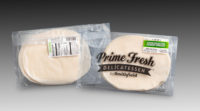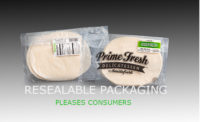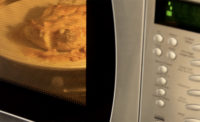Many forces buffet consumers

Consumers approach the purchase of meat, poultry, or seafood products with many concerns – freshness, shelf life, inflation-impacted prices, food waste, plastic waste, consumption of non-renewable resources, recyclability, product traceability, and the need for convenient meal prep in their often-hectic days.
Packaging plays a role in addressing all of these considerations. Brand owners are making packaging choices that extend freshness and convenience, and reduce their carbon footprint. As a result, many consumer packaged goods companies have made specific commitments and set deadlines to achieve Net Zero status where greenhouse gas emissions equal the removal of carbon from the atmosphere. Related goals involve conserving energy; replacing plastic, especially virgin plastic; transitioning to 100% recyclable, compostable or biodegradable packaging; increasing recycled content; working to increase recycling rates, and moving toward a Circular Economy.
To achieve these goals, there’s strong interest in replacing nonrecyclable multi-material substrates with mono-material films. One commercial example, a recyclable, foldable package for Abraham brand sliced ham from Bell Germany, won a WorldStar in the 2022 edition of the competition sponsored by the World Packaging Organisation. The mono-material barrier film pack is certified as 93% recyclable by Germany’s Institute cyclos-HTP. It also represents a 37% source reduction since the bottom forming web is downgauged.
Renewable fiber-based packaging is another focus of research and development resources. Although the renewable fiber typically is sourced from wood, sugarcane also may play a role. In some cases, these fiber-based structures can be qualified as compostable and are dual-ovenable to accommodate either microwave or conventional oven heating.
Barrier properties are supplied by films or coatings that are either bio-based or easily separated for recycling and don’t impede the repulpability of the paper or paperboard. The resulting structures also can provide grease resistance and provide a replacement for paper and paperboard treated with per- and polyfluoroalkyl substances (PFAS), chemicals that tend to be biopersistant and are being phased out for use in food-contact applications due to safety concerns. (1)
Sustainability was the goal behind replacing a three-component package (tray, overwrap, label) with a pouch for Tyson Instant Pot Meal Kits. The winner of a Gold Award for Expanding the Use of Flexible Packaging in the 2022 Flexible Packaging Achievement Awards competition, sponsored by the Flexible Packaging Association, the pouch represents an 80% reduction in carbon footprint and a 75% reduction in weight. It also eliminates chloride-based materials and simplifies the supply chain.
New Seasons Market, a regional grocery retailer based in Portland, Ore., has reduced plastic use by 91 percent by shifting to paper-based modified-atmosphere packaging (MAP) for its private-label Partner brand fresh pasta. The packaging innovation earned an AmeriStar award in the Food (Refrigerated) category in the competition sponsored by the Institute of Packaging Professionals. Positive impacts include the elimination of more than 120,000 clamshells from the waste stream annually. The new package also extends product shelf life from 12 to 20 days and reduces food waste. “Packaging is a complex environmental problem, and we actively work to balance the tradeoffs required to ensure food preservation, while limiting unnecessary excess and waste,” said Athena Petty, senior sustainability manager at New Seasons Market. The fiber-based MAP trays are made from FSC-certified fibers and are fully recyclable once the food-safe liner is removed. To help make the sustainable packaging a reality, New Seasons Market invested in equipment for two of its local suppliers:
Another package that extends shelf life and prevents food waste is used by Australia’s Junee Prime Lamb. This design, another WorldStar winner, places a tough patch where bone and packaging film meet to protect it from abrasion and puncture. Maintaining package integrity provides a 90-day refrigerated shelf life for the meat.
Although there’s a lot of talk about eliminating plastic packaging, sometimes, plastic is the best choice. In those situations, bio-based or biodegradable resins can sometimes serve as an alternative to conventional hydrocarbon-based resins. Yet another option, offered by a growing number of suppliers, is food-grade plastic packaging that contains up to 100 percent post-consumer-recycled content.
Sustainability improvements don’t always require a change of materials. Sometimes, a simple alteration of dimensions delivers a major impact. Westaway Sausages in the U.K. discovered this when it evaluated how retailers displayed its chilled sausages and changed to a double-height facing. The improved cube allows 48 more packages to be displayed. The re-dimensioning of the outer case cut corrugated consumption by 26 percent. With more product per pallet, it also saved transportation and storage costs and reduced refrigeration requirements, one of the most significant expenses for retailers. (2)
Consumers still want convenience
Convenience remains a strong trend. In addition to functionality, consumers also want to know more about the product and its package. This means adding information like QR codes, which can deliver details about product origination and processing directly to the consumer with a scan by a smartphone.
Labeling also is helping consumers figure out what packaging is recyclable and what isn’t. To ensure recyclable packaging is indeed recycled, the Sustainable Packaging Coalition established the How2Recyle® program to standardize recycling labeling, divert recyclables from landfills and educate consumers. The label defines proper disposal for the product’s packaging components and also provides information about local recycling programs. Companies that wish to add the label to their packaging simply join the program. Annual fees are based on gross revenue and provide access to an unlimited number of labels regardless of packaging format or volume. The How2Recyle Member Platform also can analyze the overall recyclability of a company’s product portfolio as well as track and measure packaging recyclability. (3)
Consumers also want functional convenience. A resealable pouch for John Soules Rotisserie Seasoned Chicken Breast with Rib Meat delivers functionality along with product differentiation. The winner of a Silver award for Technical Innovation in the Flexible Packaging Achievement Awards competition, the pouch features a laser score with a controlled depth, which combines easy opening with package integrity. An audible “pop” indicates the score is broken and provides tamper evidence.
Another pouch, recognized with a Silver award for Technical Innovation in the Flexible Packaging Achievement Awards competition, focuses more on shelf appeal for meat snack products like jerky. Clear anti-grease film prevents grease droplets and smears on the package surface so products look leaner, healthier, and tastier. The potential for larger windows maximizes product visibility and appeal.
Convenience and functionality earned twin-packs of Blue Buffalo Tastefuls Spoonless Singles cat food from General Mills the Best in Show award in the 2022 AmeriStar competition. The package, which is designed to provide users with a perfectly portioned, 1.3-ounce split-cup offering with a built-in chopper, also was recognized for design excellence. The recyclable polypropylene cup breaks in half easily, reducing the need to store opened, half-empty containers in the refrigerator. The packaging is designed to evacuate completely and minimize residue, but General Mills also carefully adjusted the formulation to ensure the chicken, salmon, tuna, or turkey matrix would hold together yet dispense easily.
1 Food and Drug Administration, “Authorized Uses of PFAS in Food Contact Applications,” Authorized Uses of PFAS in Food Contact Applications | FDA, accessed Aug. 31, 2022.
2 Westaway Sausages, “Making Space Work,” Making space work - Westaway Sausages, accessed Aug. 31, 2022.
3 How2Recycle, “Becoming a Member Is Easy,” Join - Business - How2Recycle, accessed Aug. 31, 2022.
(Caption: NP22Oct-AmeriStar_Blue Buffalo Tastefuls Singles Turkey CIG_Hi Res)
The cups in the twin-pack adopted for Blue Buffalo Tastefuls Spoonless Singles cat food separate easily, evacuate cleanly and minimize the need to store half-empty containers in the fridge.
Looking for a reprint of this article?
From high-res PDFs to custom plaques, order your copy today!






